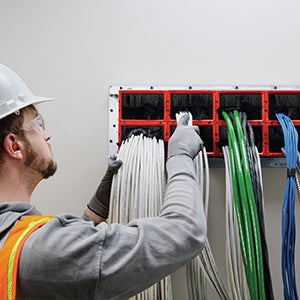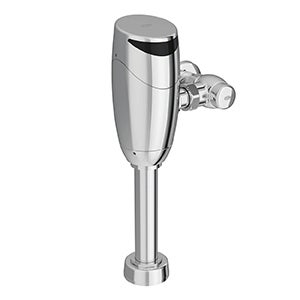Systems and equipment for hospital fire safety
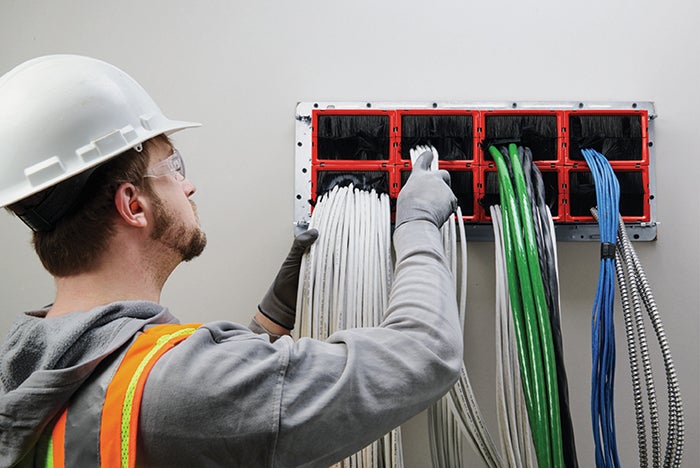
Image courtesy of Hilti
Fire protection system and equipment vendors serving the nation’s hospitals face challenges such as integrating new technology into existing structures, minimizing disruption to hospital operations, safeguarding infection control protocols and meeting regulatory requirements. Additionally, they must overcome information technology department resistance to cloud-based solutions.
Fortunately, leading fire protection vendors are answering these and other challenges for hospitals.
Systemwide solutions
Siemens Smart Infrastructure USA in Buffalo Grove, Ill., has introduced the Smart Fire Sprinkler System, which features Internet of Things (IoT) integration for real-time monitoring, sensors for identifying issues and automated response mechanisms to minimize water damage and downtime. The system provides rapid response to failures, reducing false alarms and ensuring compliance with fire safety regulations, says Steven B. Wagman, national business leader for health care.
Siemens also has unveiled Building X Fire Apps, which offer digital visibility of the fire alarm system, including incident reporting, history and notifications. “The apps provide real-time, remote access to fire system status and events via the Fire Manager or Fire Connect mobile app, as well as detailed analytics and reports, helping managers quickly identify and address potential issues,” Wagman adds.
For lithium-ion battery energy storage detection and nitrogen suppression, the Siemens FDA241 detector can detect smoldering or off-gas particles up to five times earlier than previous models, reducing the risk of a chemical reaction known as thermal runaway in battery energy storage, Wagman says.
Remote testing of actuated smoke and combination fire/smoke dampers presents an opportunity to reduce maintenance and testing costs of life safety dampers, says Michael Bulzomi, product manager for commercial dampers at Greenheck in Schofield, Wis. Greenheck offers a BACnet/Modbus remote testing module, which initiates damper cycling and verifies damper position to ensure proper operation. “It connects seamlessly to fire alarm panels or building automation systems using BACnet or Modbus communication protocols,” Bulzomi says.
Johnson Controls in Milwaukee recently announced an extension to its commercial, portable fire extinguisher lines with a more environmentally friendly option, CleanGuard+, available through Ansul and Pyro-Chem. “Its FK-5-1-12 agent is residue-free, corrosion-resistant and requires no cleanup after discharge, helping to minimize collateral damage after operational downtime,” says Greg Parker, global vice president and portfolio manager for fire and safety. “The FK-5-1-12 agent also allows CleanGuard+ to be used in much smaller spaces than traditional clean agent fire extinguishers. In addition, an optional MR Conditional model is rated up to 7 tesla.”
Alarm systems
Edwards, a Bradenton, Fla.-based part of Carrier Global Corp., recently launched Genesis LED low-frequency devices. The devices combine low-frequency notification with low-wattage usage to deliver cost savings as well as backward compatibility. “This product meets the new code for sleeping rooms found in independent living facilities, medical office buildings and clinics,” says Sanjeev Kumar, executive director of product management and connected offerings.
Potter Electric Signal Co. in St. Louis has introduced PAD300 D-TECT addressable sensors and bases, which are designed to “self-learn” and reduce false alarms. “The newly designed photoelectric chamber detects fire while rejecting nuisance issues,” says Abe Lizama, product manager. “These new sensors utilize the Potter Addressable Device (PAD) protocol and are backward compatible with all PAD100 and PAD200 devices.”
Sophisticated equipment like MRIs are affected by electromagnetism. “Even a smoke alarm that has magnet testing will affect the performance and result of an MRI,” Lizama adds. “So, we designed and manufactured a conventional smoke detector that eliminates this problem.”
Honeywell in Charlotte, N.C., has introduced the first fire alarm system with UL-approved self-testing smoke detectors, called the Notifier Inspire Series, says Doug Hoeferle, global marketing director. It features self-test smoke detectors that are securely enabled through Honeywell’s Connected Life Safety Services (CLSS) cloud-based platform. “CLSS provides real-time visibility into the fire system and allows technicians to diagnose and troubleshoot problems ahead of time, improving first-time fix rates and reducing time spent on-site,” Hoeferle says.
Notifier self-test smoke detectors eliminate many of the physical barriers encountered during annual tests and inspections that may cause areas to go untested. “A single technician can initiate the test at the Notifier Inspire panel for the entire building,” Hoeferle adds.
Many hospitals use battery energy storage systems (BESS), which may contain thousands of lithium-ion batteries, as a means of collecting and storing solar power and providing uninterrupted power. However, every lithium-ion battery can experience thermal runaway, which quickly overheats the battery cell and produces flames and toxic off-gas, potentially spreading to adjacent cells and creating a dangerous situation.
To eliminate this hazard, Fike Corp. in Blue Springs, Mo., has introduced Fike Blue, a third-party-tested solution proven to suppress lithium-ion battery fires and cool battery temperatures to stop thermal reaction. “Fike Blue is a liquid that fills the battery module, submerges the batteries and absorbs the heat,” says Rick Seidel, channel manager. “Thus, Fike Blue makes the safe deployment of BESS units into populated areas possible.”
Mechanical solutions
Remedi8 in Lenexa, Kan., has introduced a Fire Door Caulk that provides an inexpensive solution for maintaining rated door compliance and helps ensure that fire doors continue to function effectively during a fire, says Nhut Bui, president. “By offering a cost-effective means to address compliance issues, Fire Door Caulk supports hospital operations by simplifying the maintenance process and reducing the likelihood of non-compliance,” adds Bui.
Hilti in Plano, Texas, has unveiled a firestop cable pathway solution, the CFS-MSL modular fire sleeve, designed with health care facilities in mind. “The CFS-MSL’s half-shell design helps facilities managers enhance their existing cabling retrofits,” says Erika Schremmer, fire protection product manager. “The modular sleeve’s configuration allows users to run additional cables through the device, making it an ideal solution for future expansion and upgrade work in hospitals. Most importantly, the CFS-MSL comes with firestop already integrated into its design, which not only simplifies fire safety inspections but also gives users peace of mind that once the device is installed, its opening is fire-stopped correctly for the life of the building.”
Cable penetrations pose a major issue in hospitals due to their impact on fire safety, infection control and building integrity. With the adoption of new technologies in hospitals, the number of cable penetrations has continued to increase. To help hospitals meet this challenge, Specified Technologies Inc. in Somerville, N.J., offers EZ-Path Retrofit devices, says Nathan Waye, regional manager for the health care northwest region.
The EZ-Path Retrofit two-piece design allows for quick installation around cable bundles and extended sleeves while accommodating standard conduit bushings. “This retrofit device corrects non-compliant, overfilled sleeve conditions in walls and floors,” Waye adds. “It comes in 2- and 4-inch device sizes and can accommodate cable capacities ranging from 50% to 100% visual fill. The steel backplate attaches securely to the end of the steel sleeve, while mounting tabs enable attachment to the substrate for flush-mounted sleeves.”
Safti-Seal in Bellevue, Wash., offers a slotted continuous angle backer, which has a UL 2079 v5 certification for both Level 3 seismic and 100% movement including up to 1 1/2 inches of joint protection for pipes through the head of wall, according to Mike Tullis, vice president of sales and marketing. The company also offers Flute Guard, which provides a maintenance-free alternative to castle cut drywall and long lead times on mineral wool.
Safti-Seal has new penetration products in development and has started the certification process for solutions through traditional no-fly zones. These products will address structural deflection while firestopping static penetrations in the dynamic perimeter deflection zone. “This will smooth out the most costly and difficult construction intersection at the head of wall where penetrations, deflection and joint seals converge,” Tullis adds.
Looking ahead
Hoeferle believes the future of fire safety systems and equipment will be about taking advantage of the benefits of connectivity. “The adoption of digitization is a crucial advancement, offering many benefits for buildings and occupants,” he says. “These systems will continue to incorporate IoT technologies, real-time monitoring and the availability of digital data to help increase situational awareness.”
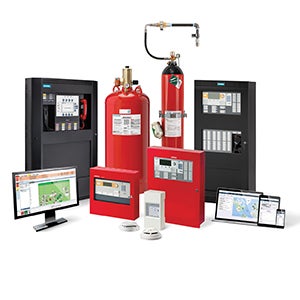
ALL IN ONE
The Total Fire Life Safety Services offering includes installing and maintaining fire alarms, sprinkler systems, emergency lighting and fire extinguishers. Siemens Smart Infrastructure USA
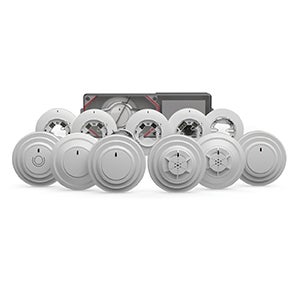
SMART SOLUTION
PAD300 D-TECT addressable sensors and bases are designed to “self-learn” and reduce false alarms. Potter Electric Signal Co.
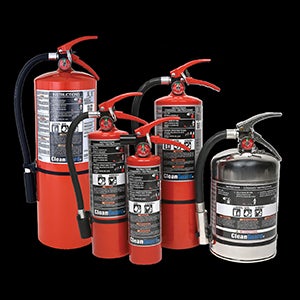
SAFE SUSTAINABILITY
Ansul and Pyro-Chem portable fire extinguisher lines feature a more environmentally friendly option called CleanGuard+. Johnson Controls
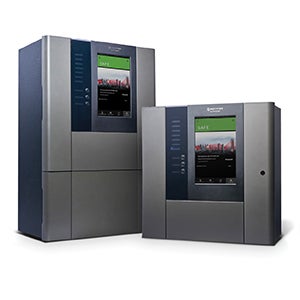
CLOUD CONTROLLED
The Notifier Inspire series self-test smoke detectors are securely enabled through a cloud-based platform. Honeywell
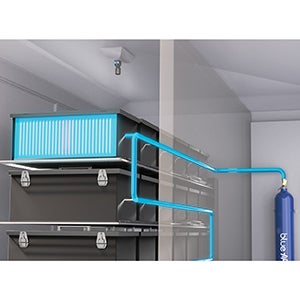
SENSE AND SUPPRESS
Fike Blue suppresses lithium-ion battery fires and thermal runaway chemical reactions. Fike Corp.
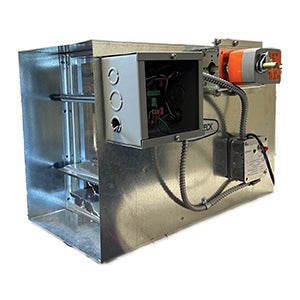
REMOTE CONTROL
The FSD-311 combination fire/smoke damper features an optional BACnet/Modbus remote testing module. Greenheck
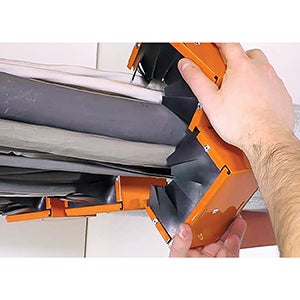
BUNDLED UP
The EZ-Path retrofit two-piece design allows for quick installation around cable bundles and extended sleeves. Specified Technologies Inc.
Neal Lorenzi is a Mundelein, Ill.-based contributor to Health Facilities Management.


